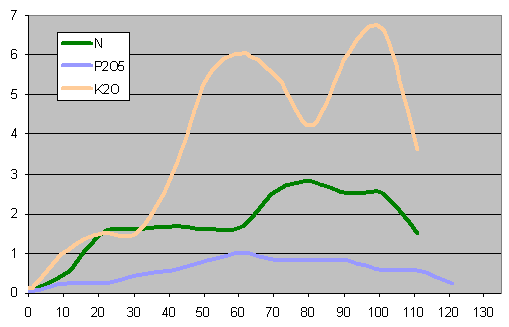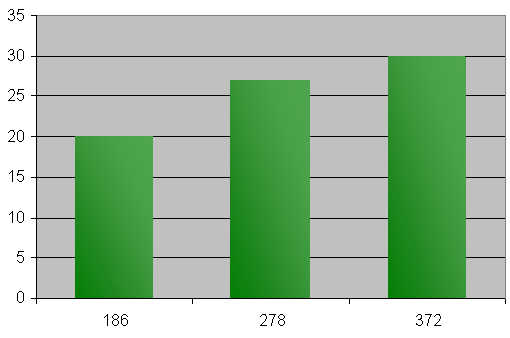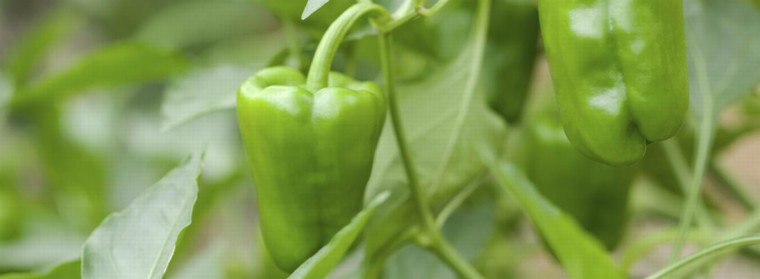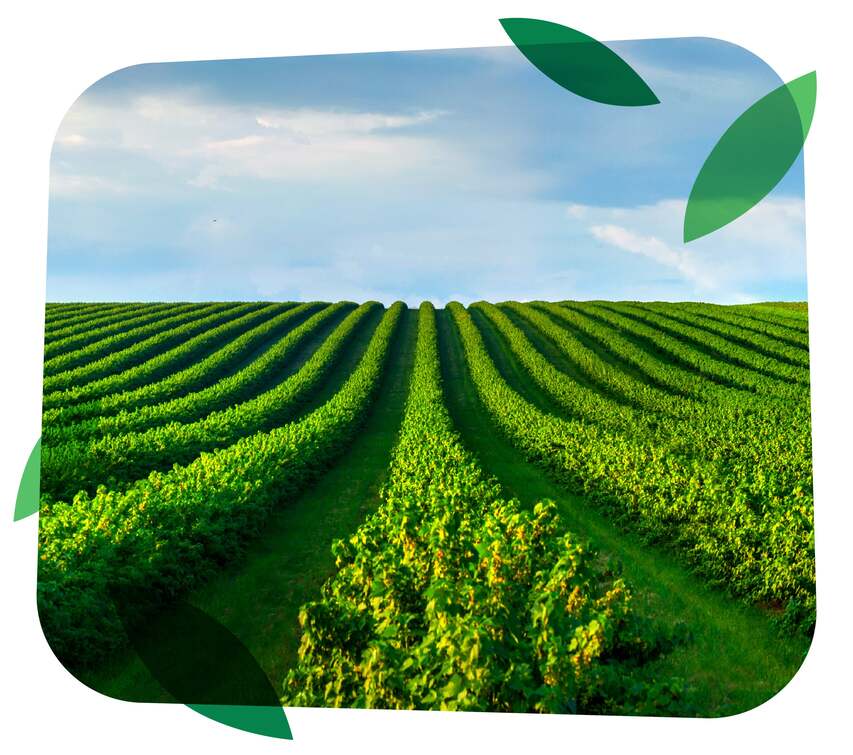Index:
1. Main functions of plant nutrients
|
Nutrient
|
Functions
|
|---|---|
|
Nitrogen (N)
|
Synthesis of proteins (growth and yield).
|
|
Phosphorus (P)
|
Cellular division and formation of energetic structures.
|
|
Potassium (K)
|
Transport of sugars, stomata control, cofactor of many enzymes, reduces susceptibility to plant diseases and a-biotic stresses, counteracts salinity
|
|
Calcium (Ca)
|
A major building block in cell walls, and reduces susceptibility to diseases.
|
|
Sulphur (S)
|
Synthesis of essential amino acids cystin and methionine.
|
|
Magnesium (Mg)
|
Central part of chlorophyll molecule.
|
|
Iron (Fe)
|
Chlorophyll synthesis.
|
|
Manganese (Mn)
|
Necessary in the photosynthesis process.
|
|
Boron (B)
|
Formation of cell wall. Germination and elongation of pollen tube.
Participates in the metabolism and transport of sugars. |
|
Zinc (Zn)
|
Auxins synthesis.
|
|
Copper (Cu)
|
Influences in the metabolism of nitrogen and carbohydrates.
|
|
Molybdenum (Mo)
|
Component of nitrate-reductase and nitrogenase enzymes.
|

2. Nutrients uptake curves
Seeding: July 14th ; Soil type: Sand ; Plant Density: 100,000 plants/ha
|
Daily uptake (kg/ha) |
 |
|
|
Days after seeding
|
As can be seen in figure 1, the greatest absorption of nutrients occurs in the first 60 days of growth, and another peak takes place after the first fruit removal. Therefore, the plant requires high nitrogen application early in the growing season with supplemental applications after the fruit initiation stage. Improved nitrogen use efficiency and greater yields are achieved when the nitrogen is applied under polyethylene mulches and with 12 weekly N applications in a drip irrigation system (Nutrigation™).
At least 50-90% of the total nitrogen should be applied in nitrate (NO3-) form.
3. N-P-K functions in pepper
Nitrogen (N) contributes to the vegetative growth of the pepper plant. It is important that the plant, when reaching the flowering stage, will be well developed vegetatively; or it will have a low yielding potential. Pepper plants were found to positively respond (by increasing number of flowers and fruits) to higher nitrogen concentrations than the usual norms for other crops.
Phosphorus (P) is essential for the normal development of the roots and reproductive organs (flowers, fruit, seeds). Highly available phosphorous is needed for the establishment of the transplant. Phosphorus shortage in the soil will result in development of too small and short branches, many undeveloped buds and less fruit in general. Adequate phosphorus enhances early fruit ripening.
Potassium (K) - adequate levels enhance the accumulation of carbohydrates and the resistance to low temperatures and diseases. See figure 2.
Potassium deficiency slows down the growth rate of pepper plants. Potassium deficiency symptoms are: brown spots at the edges of the leaves and fruits, and sometimes there is curling and drying of the leaves. Severe potassium deficiency will retard the transportation of sugars within the plant, leading to starch accumulation in the lower leaves.
Figure 2: Effects of potassium (K) on pepper yield, under constant N rate of 224 kg/ha
|
Pepper yield (MT/ha) |
 |
|
|
K2O rate (kg/ha)
|
Table 4: Example of optional growing methods and the required rates of macro- and secondary plant nutrients.
|
|
Greenhouse
|
Open Field
|
|---|---|---|
|
Expected yield (T/ha)
|
75 - 200
|
11 - 140
|
|
Plant density (plants/ha)
|
50,000 - 100,000
|
30,000 - 50,000
|
|
Nutrients Uptake (kg/ha)
|
||
|---|---|---|
|
N
|
390 - 920
|
116 - 705
|
|
P2O5
|
200 - 330
|
132 - 276
|
|
K2O
|
640 - 1530
|
174 - 1155
|
|
CaO
|
100 - 210
|
38 - 174
|
|
MgO
|
60 - 150
|
22 - 115
|
|
S
|
40 - 50
|
35 - 40
|
4. Nutritional disorders in peppers
Poor fruit setting and development, limited growth, defective flower formation and yellowing of leaves are some of the symptoms caused by nutrients deficiencies in pepper plants. The deficiency symptoms table helps you figure out what sort of deficiency the pepper plant suffers from, and advises how to avoid excess and toxicity symptoms.
Blossom end rot (BER)
BER occurs mainly during hot weather conditions. Fruits are affected in their early stages of development (10-15 days after fruit set); the cause is related to the rate of calcium supply to the fruit, which is lower than the rate of the fruit growth. This results in the collapse of certain tissues in the fruit, demonstrated as BER. Factors that favor BER are directly related to limited calcium uptake and transport to the fruit, like high salinity, high temperatures and high growing intensity and water shortage.
Pepper spots
Black spot or stip is shown in the fruit as grey/black spots, which develop under the skin in the fruit wall about the time the fruit attains a diameter of 8 centimeters or more. As the fruits ripen, the spots slightly enlarge and turn green or yellow. Stip is a calcium disorder, caused by excessive N-NH4 and K rates. Susceptibility greatly varies by variety.
Table 5: Visual symptoms exhibited by pepper plants under nutritional disorders.
|
Nutrient
|
Deficiency symptoms
|
Excess / Toxicity symptoms
|
|---|---|---|
|
Nitrogen
|
Plant development gradually slows down. Gradual drying, beginning at leaf margins, of the area between the lower leaf veins. The petioles bend and hang downwards, parallel to the stem. The plant develops few flowers and fruit setting is poor. The fruit receptacle is thin, and the ovary is small. Sometimes there is no fruit development on the plant at all, and on those plants that bear fruits, the fruit is deformed.
 |
Plants are usually dark green in color, have abundant foliage, but usually with a restricted root system. Flowering and seed production can be retarded.
|
|
Phosphorus
|
The plants display limited growth. The leaves are hard and brittle to the touch. Flower formation is defective. Few flowers develop, and in those that do develop, only one in every four or five develops a fruit. The fruit is underdeveloped, with a thin receptacle, and very few seeds. The root system is undeveloped.
  |
No typical primary symptoms. Copper and zinc deficiencies may occur due to excessive phosphorus.
|
|
Potassium
|
Yellow chlorosis spots appear between leaf veins, firstly in the lower leaves. The veins and the areas adjacent to these spots do not change their color. Later, the chlorotic spots become lighter. (This can be seen mainly in the upper parts of the plant). There is little fruit setting, and not much fruit, which is smaller than usual.
 |
Usually not excessively absorbed by plants. Excessive potassium may lead to magnesium, manganese, zinc or iron deficiencies.
|
|
Sulfur
|
Causes leaves to become yellowish.
|
Reduction in growth and leaf size. Leaf symptoms often absent or poorly defined. Sometimes interveinal yellowing or leaf burning.
|
|
Magnesium
|
Is Common on pepper plants. Yellowing of the leaves is apparent in the interveinal areas and veins remain green. The oldest leaves are affected first. Sometimes magnesium deficiency occurs when excessive applications of potassium have been made. It may also show up under extremely hot dry weather.
 |
Very little information available.
|
|
Calcium
|
The most common reason for Blossom End Rot of the fruit (see figure 7). This may be corrected by foliar spray of calcium chloride or calcium nitrate. Further information following downwards.
  |
No consistent visible symptoms. Usually associated with excessive soil carbonate.
|
|
Iron
|
Symptoms show at the later stages of growth. The young leaves fade and then become yellow in the areas between the veins. The veins remain green.
|
Rarely evident in natural conditions. Has been observed after foliar iron sprays manifested as necrotic spots.
|
|
Chloride
|
Wilted leaves, which then become chlorotic bronze, and necrotic.
Roots become stunted and thickened near tips. |
Burning or firing of leaf tips or margins. Bronzing, yellowing and leaf abscission and sometimes chlorosis. Reduced leaf size and lower growth rate.
|
|
Manganese
|
Chlorotic spots between the upper leaf veins.
|
Sometimes chlorosis, uneven chlorophyll distribution. Reduction in growth. Lesions and leaf shedding may develop later.
|
|
Boron
|
The deficiency manifests itself very quickly. The lower leaves curl upwards. Growth is stunted. The plant develops a thick, short stem. The apex withers and the leaves become yellow from bottom to top of the plant. See figure 8. There is a reduced production of flowers, and fruit setting is poor.
Boron deficiency; the growing points die and decay, and the leaves are misshapen:
 Boron excess:
  |
Yellowing of leaf tip followed by progressive necrosis of the leaf beginning at tip or margins and proceeding toward midrib.
See figure 9. |
|
Zinc
|
The leaves become narrow and small in chili.
|
Excessive zinc commonly produces iron chlorosis in plants.
|
|
Copper
|
Appear late in the vegetative stage. The leaf margins curl and dry up. The leaves and the fruit become narrow and rectangular.
|
Reduced growth followed by symptoms of iron chlorosis, stunting, reduced branching, thickening and abnormal darkening of rootlets.
|
|
Molybdenum
|
The foliage turns yellow-green and growth is somewhat restricted. The deficiency occurs most commonly on acidic substrates.
|
Rarely observed. Sometimes leaves turn golden yellow.
|
5. Leaf analysis standards
|
|
Deficient
|
Normal
|
High
|
|---|---|---|---|
|
|
% of dry matter
|
||
|
N
|
2-2.5
|
3-4
|
4-5
|
|
P
|
0.25
|
0.3-0.4
|
0.4-0.6
|
|
K
|
2
|
3.5-4.5
|
4.5-5.5
|
|
Ca
|
1
|
1.5-2
|
5-6
|
|
Mg
|
0.25
|
0.25-0.4
|
0.4-0.6
|
|
Na
|
|
0.1
|
|

Table 7: Micro plant nutrients contents in pepper plant leaves.
|
|
Deficient
|
Normal
|
High
|
|---|---|---|---|
|
|
ppm of dry matter
|
||
|
Fe
|
50-100
|
200-300
|
300-500
|
|
Mn
|
25
|
80-120
|
140-200
|
|
Zn
|
25-40
|
40-50
|
60-200
|
|
Cu
|
|
15-20
|
24-40
|
|
B
|
|
40-60
|
60-100
|
|
Mo
|
|
0-4
|
0.6
|
6. Plant nutrients requirements
Table 8: Nutritional requirements of pepper in greenhouse.
|
Expected yield
(Ton/ha) |
Removal by yield (kg/ha)
|
Uptake by whole plant (kg/ha)
|
||||||||
|---|---|---|---|---|---|---|---|---|---|---|
|
N
|
P2O5
|
K2O
|
CaO
|
MgO
|
N
|
P2O5
|
K2O
|
CaO
|
MgO
|
|
|
25
|
50
|
15
|
87
|
12
|
7
|
140
|
35
|
201
|
107
|
32
|
|
50
|
100
|
30
|
175
|
25
|
15
|
221
|
57
|
330
|
153
|
49
|
|
75
|
150
|
45
|
262
|
37
|
22
|
303
|
79
|
457
|
198
|
64
|
|
100
|
200
|
60
|
350
|
50
|
30
|
384
|
101
|
585
|
244
|
81
|
|
125
|
250
|
75
|
437
|
62
|
37
|
466
|
123
|
712
|
290
|
97
|
|
150
|
300
|
90
|
525
|
75
|
45
|
547
|
145
|
841
|
336
|
114
|
|
175
|
350
|
105
|
612
|
87
|
52
|
629
|
167
|
968
|
381
|
129
|
|
200
|
400
|
120
|
700
|
100
|
60
|
710
|
189
|
1096
|
427
|
146
|

Table 9: Nutritional requirements of pepper in open field.
|
Expected yield
(Ton/ha) |
Removal by yield (kg/ha)
|
Uptake by whole plant (kg/ha)
|
||||||||
|---|---|---|---|---|---|---|---|---|---|---|
|
N
|
P2O5
|
K2O
|
CaO
|
MgO
|
N
|
P2O5
|
K2O
|
CaO
|
MgO
|
|
|
20
|
40
|
12
|
70
|
10
|
6
|
121
|
30
|
173
|
95
|
28
|
|
40
|
80
|
24
|
140
|
20
|
12
|
191
|
49
|
282
|
137
|
43
|
|
60
|
120
|
36
|
210
|
30
|
18
|
261
|
67
|
390
|
179
|
57
|
|
80
|
160
|
48
|
280
|
40
|
24
|
331
|
86
|
499
|
221
|
72
|
|
100
|
200
|
60
|
350
|
50
|
30
|
402
|
105
|
608
|
263
|
86
|
|
120
|
240
|
72
|
420
|
60
|
36
|
472
|
124
|
716
|
305
|
100
|
|
140
|
280
|
84
|
490
|
70
|
42
|
542
|
142
|
825
|
347
|
115
|
Need more information about growing peppers? You can always return to the pepper fertilizer & pepper crop guide table of contents
For more information visit our iron deficiency in plants and soils!
Check out our new Fertilizer Conversion Calculator!



